DOMINIC V. ACQUISTA, DEPARTMENTS EDITOR
The Hamburg Mint in Hamburg, Germany, has been in operation since 834 C.E., making it one of the oldest mints in Germany. Given its rich heritage, the mint’s operators have gone to great lengths to ensure that its coins are the best they can be, especially when it comes to
color printing their newly stamped currency.
To increase the accuracy of the printing technology used on the mint’s euros, machine and computer vision specialist phil-vision created a machine vision system that tracks the exact
position of the coins as they are placed on their trays, ensuring accurate printing on the coinage.
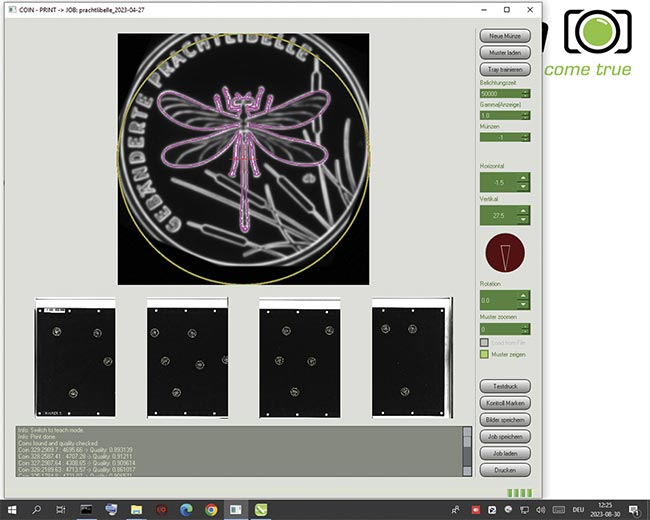
The pvPhotobox tracks features found on the coins to create accurate capture data for the printer to read and follow. Courtesy of phil-vision.
This is not the first time the Hamburg Mint relied on machine vision to help automate the minting process. In the early 2000s, the mint deployed a system designed to pack coin sets in display boxes, placing them face up and in the correct rotational position. Surface inspection was not required, because very few features were printed on the coins. The features that were there, including the year, were located by rotating images of the coins internally to a normalized position.
According to Peter Steinbrück,
phil-vision’s project manager and longtime partner of the Hamburg Mint, at the time, “the hardware used was considered very fast and low-resolution cameras were used.” The original system could process 16 coins per second and the cameras used had a resolution of <1 MP.
This system sufficed for about two decades, until 2021, when the mint
approached Steinbrück to try to overhaul the entire packaging system and eventually the automation of printing images in color on the coins.
Implementing the new system
Ten months later, phil-vision developed the pvPhotobox, a system based on 20-MP monochrome GigE cameras with different sizes of phil-vision’s pvLight ultrabright diffuse LED panels to provide illumination. It now stands as a part of the mint’s minting system.
The 250 coins, embossed with the desired motif from the minting unit, are each placed on a tray by hand. The GigE cameras then record each coin’s position and rotation on the tray, extracting the information relevant for printing.
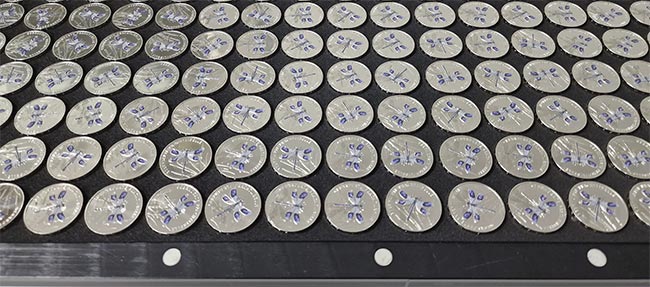
Coins are laid on trays and capture data is recorded by the pvPhotobox before they are sent to the printer. The algorithm will recognize the rotation and placement of the coins to make consistent prints. Courtesy of phil-vision.
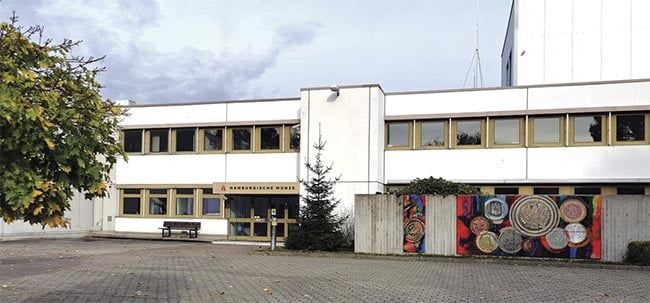
The facade of the Hamburg Mint. Courtesy of Hamburg Mint.
A specially designed algorithm then analyzes the captured image data to identify the exact position and size of the colorable motif details to be printed, ensuring accurate recognition even when the orientation of the coins on the tray varies.
After that, a communication unit transfers an image of the coins in their current positions on the tray to the printer in real time, the coins are moved to the printer, and afterward they are packaged and prepared for delivery.
“The next tray will look different, of course, and the process starts again,” Steinbrück said.
Design challenges
One of the biggest problems that the
developers of the pvPhotobox faced was the issue of accuracy. The Hamburg Mint needed their coins to come out of the printer with each printed motif in the exact position, so phil-vision had to work around the limitations of the printer.
“The inkjet printers used are quite large and can print up to 250 coins at a time. Therefore, the system had to cover the entire 770- × 360-mm area in one shot … the use of four independent high-resolution cameras did not make things any easier,” Steinbrück said.
While the GigE cameras allowed for a flow of capture data to come in, because they acted as independent systems, they all needed to be calibrated to account for mistakes that the printer might make during the printing process.
“The printers are too imprecise in absolute terms, but with very reproducible results — a fact we took advantage of to find an acceptable solution by including the printer tolerances in our calibration.”
This led to the addition of other technologies to the pvPhotobox to help generate better imaging from the cameras.
“We built a bespoke lighting setup using our pvLight LED panels to ensure that each coin was uniformly illuminated in the corners and near
the center of the tray. However, having accurately determined the rotational and lateral positions of the coins, we still had to persuade the printers to print the images where we found the coins, which required further calibration for each individual printer and tray.”
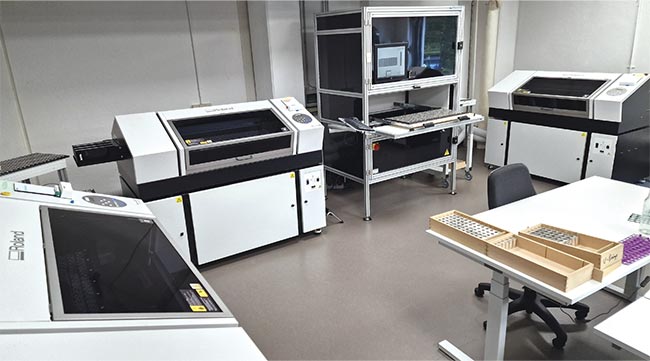
The pvPhotobox (center) along with the inkjet printers that add color to the Hamburg Mint’s coinage. Courtesy of phil-vision.
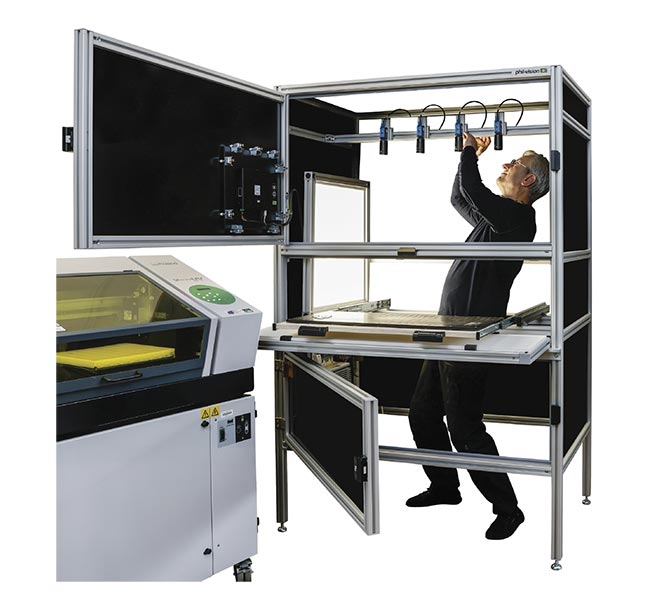
An exploded view of the pvPhotobox in which Peter Steinbrück is seen adjusting the system’s GigE cameras. Courtesy of phil-vision.
In the end, the cameras had to be calibrated to within 10 µm of deviation. Despite being a tight window, this led to the printer staying within the permissible deviation, exceeding an overall print accuracy of better than 50 µm.
Future implementation
In addition to the Hamburg Mint, the pvPhotobox has also been implemented at the Berlin Mint, helping to accurately print hundreds of thousands of coins.
Currently, the system is made specifically for minting, producing medals, and creating printed jewelry, but philvision also envisions that its position and rotation detecting system could be the basis for future applications in the packaging or robotics industries.